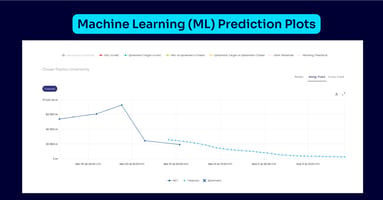New space traffic management feature could save constellation operators millions of euros...
Forecasting the position uncertainty with confidence intervals
.png?width=804&height=420&name=Blog_LinkedIn_Neura%20(5).png)
Improved decision-making using Neuraspace PRO feature.
Overview
Satellite operators rely on constantly updated information and estimates of the current encounters to keep their assets safe. Such estimates include the objects’ position and the uncertainty over that position at the expected time of closest approach (TCA). They are critical to plan risk mitigation measures.
As the TCA approaches, because orbit determination and propagation are performed for shorter time intervals, the accuracy of these estimates tends to improve. In other words, the position uncertainty tends to decrease as TCA is approached.
There is a trade-off, however. While position estimates become more accurate closer to TCA, this information arrives at a time close to the critical decision moment. This can limit the time available for performing avoidance manoeuvres or increase their costs. Therefore, knowing the evolution of the position uncertainty in advance can be crucial.
The Forecaster feature of Neuraspace PRO is a Machine Learning model which predicts the objects’ position uncertainty at TCA by taking previous sequences of position uncertainty values to predict the next values until TCA is reached.
In our latest version, we have expanded the functionality of this feature to include the confidence intervals associated with our forecasts.
Why confidence intervals matter?
Confidence intervals offer a range of values within which we can reasonably expect the true outcome to fall. They reflect the uncertainty inherent in any prediction or forecast.
By understanding the width and values of these intervals, we gain a clearer understanding of the potential variability in future values for the position uncertainty.
How does it work?

Scenario
Let's consider a practical scenario to illustrate the importance of confidence intervals. Imagine you have a conjunction where the chaser’s position uncertainty evolution is shown as in the following image:
With the forecasting model, Neuraspace predicts (dark purple line) that the along-track uncertainty, despite having increased on the last data received (HAC), will decrease throughout the next few days. This means that we expect to have better knowledge regarding the chaser position as TCA is approached.
With confidence intervals integrated into the analysis (light purple region), you not only receive the forecasted position uncertainty but also insights into the range within which this trend is likely to fluctuate. For instance, comparing the value of the last received data and the one predicted at TCA, the forecast suggests a 96% decrease. The associated confidence interval at TCA indicates that this decrease could be between 67% and 98%.
With confidence intervals, satellite operators can:
- Use additional information instead of relying solely on the point forecast;
- Make informed decisions based on their risk tolerance - for example, plan a manoeuvre or decide to wait for more information before taking action.
---
Know more about our Space Traffic Management solution and how we help satellite operators automate and optimise operations? Schedule a demo.
Image credits: © Neuraspace. All rights reserved.



